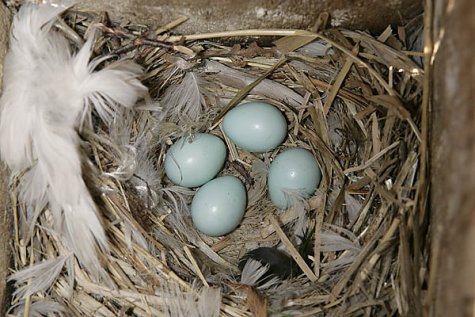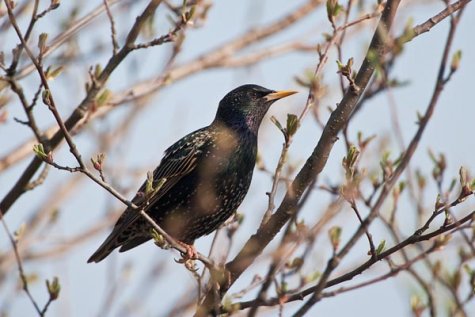Starling chicks about to hatch
Photos: Arne Ader
Translation: Liis
Starling nest.
| Starling | Kuldnokk | Sturnus vulgaris |
During the nest building period the singing of the starlings is of course at its mightiest. They start up to half an hour before sunrise in the mornings, in the evenings singing ends with the sunset. Sometimes they even sing on the ground. The head is thrown back, the drooping wings shudder. The female sings mostly during the courting and mating period but her song is shorter and less resounding. Starlings usually begin their singing in the middle of May, and the observant listener discovers that there had been an “empty space” in the sounds of nature.
In some places in south Estonia starling chicks have already hatched. In a full clutch there are 4-7 pale blue eggs. Female starlings that start nesting early generally have larger clutches. All eggs need not have been laid when the incubation starts. Basically it is the female that incubates, and the male replaces her at times. At night the female stays on the nest. Male birds spend the night in groups, in thickets of bushes or reed banks; from there they come to the nests in early morning. The incubation period lasts about a dozen days.
Hatching is confirmed by the appearance of pale blue eggshells around the nest: they are simply thrown out of the nest, and where starlings are nesting it often happens during the “twenties” days of May. The behaviour of the adult birds changes at once too – one sits in the nest and keeps the chicks warm and the other in the couple searches for food. Already after a few days faint twittering can be heard from the nest.
About food rations for the chicks: immediately after the hatching small insects, after that caterpillars and pupae of insects, earthworms and wireworms and beetles. The feeding goes on from early dawn light to evening dusk.
Starling.










